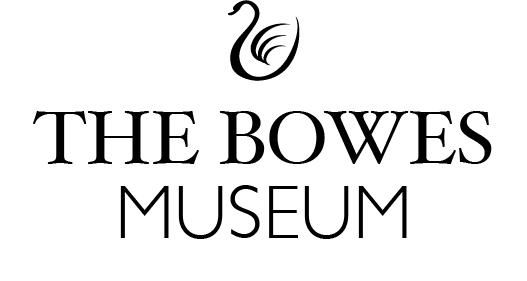
Charles II, King of Spain (1661–1700)
As the only surviving son of King Philip IV (1605–65) and his wife and niece, Mariana of Austria (1634–96), Charles II (1661–1700) was proclaimed King of Spain at the age of three, with his mother as Queen Regent. In this portrait he is depicted as a child-monarch, dressed in black and standing on a raised platform. On the left, two pages hold up his red, ermine-trimmed cloak, which matches the red feathers of his hat. His cloak is embroidered in gold, featuring the crests of Castile and Leon, the two principal kingdoms that comprised Spain in the seventeenth century. As is traditional in portraits of male Habsburg rulers, Charles wears the insignia of the Order of the Golden Fleece. Yet, in contrast to the understated portraits of earlier Habsburgs, this one depicts him with the traditional attributes of royal authority. His hand rests on an orb on the table, symbolizing his power over the world, while the crown and sceptre, which represent symbols of monarchy, are placed on a red cushion.
Although Charles II is represented as a powerful monarch, his rule was unstable and marked by ill health. As a result of generations of inbreeding in an attempt to maintain the purity of their blood, the Habsburgs developed mandibular prognathism (the famous Habsburg jaw) and other maladies that affected Charles II especially. He is said to have suffered from physical and mental disabilities, which is why his mother Mariana exerted control over him for most of his life. His inability to produce an heir resulted in the War of the Spanish Succession (1701–14), which put an end to the Habsburg dynasty in Spain. As a result, the French Bourbons took the Spanish throne, a position that they still occupy today.
This anonymous portrait is thought to be a copy after a lost original by Juan Carreño de Miranda, who became court painter to Charles II in 1671, and whose work was influenced by Francisco Rizi (1614–85), Diego Velázquez (1599–1660), and Anthony van Dyck (1599–1641). The court painter, Juan Bautista Martínez del Mazo (c. 1612–67), depicted the young monarch in mourning dress (Charles II of Spain in Mourning, Royal Collection, Hampton Court), while Sebastián de Herrera Barnuevo (1619–71) painted portraits of him in complex interiors (Charles II of Spain with Portraits of his Ancestry, Museo Lázaro Galdiano, Madrid).
 Click to zoom and pan
Click to zoom and pan
...
Your feedback is very important to us. Would you like to tell us why?
We will never display your feedback on site - this information is used for research purposes.
Artwork Details
Title
Charles II, King of Spain (1661–1700).
Artist
After Juan Carreño de Miranda (Avilés, 1614 – Madrid, 1685).
Date
Late eighteenth century.
Medium and Support
Oil on canvas.
Dimensions
107.5 x 188 cm.
Marks and Inscriptions
None.
Acquisition Details
Bequeathed by John and Joséphine Bowes 1885.
Previous Owners
John and Joséphine Bowes until 1885.
Institution
The Bowes Museum, Barnard Castle, B.M.69.
Bibliography
Eric Young, ‘Portraits of Charles II of Spain in British Collections’, Burlington Magazine, 126 (1984, no. 977): 488–93;
Eric Young, Catalogue of Spanish Paintings in the Bowes Museum, 2nd ed. (Middlesborough: The Bowes Museum, 1988), pp. 182–83.
